The Sardine Run Expedition is a unique wildlife encounter, following the annual sardine migration along South Africa’s beautifully rugged coastline. Typically, the annual migration of the sardines from their beginnings in the Southern Cape to being sighted off shore on South Africa’s Wild Coast starts in June each year. As the shoals of sardines move northwards up the coast the size of the sardine shoals tends to grow, ultimately forming the ‘greatest shoal on earth’. This amazing journey attracts a multitude of predators that track and follow the Sardines' migration, exploiting this localized and abundant food source. It is hard to describe the excitement of the Dolphins, numerous bird species, whales, Cape Fur Seals and sharks as they ‘hunt’ the sardines. You can actually hear the excited squeals of the thousands of Common and Bottlenose Dolphins as they travel in large breaching waves to pursue their prey, long before you see them. Attracted by the Sardines, game fish such as Shad and Garrick pursue the sardine shoals and provide another food source for the dolphins. Contributing to the noise and surface action are the birds, Cape gannets, Albatross (yellow nose and black browed), Terns and Petrels, diving into the shoals of Sardines from a great height. Humpback Southern Right and Brydes Whales can also be seen in pursuit of this moving feast.
Below the surface the action continues with the sharks (Copper, Dusky, Blacktip, Whitetip, Bronze Whalers and Bull sharks) feasting on the sardines and other marine life. The Cape Fur seals actually sleep with one eye open, ready to react should they see a large shark in their vicinity.
The dolphins and sharks look for opportunities to herd the Sardines into balls, this is the sardines natural reaction to feeling threatened as they perceive there to be safety in numbers. These ‘bait balls’ vary in size and frequency, with the action on some of the larger ones lasting hours.
The shoals of sardines are spotted by the telltale signs of dolphins splashing at the surface or by flocks of birds diving into the water. From Mpame we are also able to use the elevated hills to look for miles to see the activity. The boat is positioned slightly in front of the action so that by the time divers enter the water the marine activity has drifted to their position. Experience recommends that the majority of time in the water is spent on snorkel as this gives the speed and flexibility to enter and exit the water easily and therefore not miss out on the fast moving action. If activity of sufficient size is encountered SCUBA is used.
As the vast majority of the in water activity can be conducted with ease on snorkel this makes the Sardine Run an accessible and exciting marine expedition for non-divers and divers alike. As long as participants are comfortable snorkeling they will not miss out on the action. This makes it a great adventure for the whole family.
After several weeks of migrating northwards, the sardines swim out to sea and are carried along the inner edge of the Agulhas current back to the southern Cape to spawn. It must be mentioned at this point that the Sardine Run is a natural phenomenon; therefore the exact timing cannot be predicted. Typically the best times to see the ‘run’ is June to July
On the Sardine Run, after a light breakfast we launch the boat and spend the day at sea looking for the Sardine Run “action”. Typically you will be at sea from around 8am till 3pm daily depending on the sea conditions and the activity seen. With a surf launch, long boat rides and the amount of time spent at sea we recommend that clients ensure their fitness to participate (an average level of fitness is sufficient). Packed lunches and hot and cold drinks will be served on board. When the sardines are spotted, depending on whether they are fast moving or not, we will decide to either snorkel or scuba dive. A full dinner will be served in the evenings with the menu changing daily.
For the safari add-on you will visit Hluhluwe-Imfolozi Game Reserve, the oldest proclaimed nature reserve in Africa, known for its rich wildlife and conservation efforts. Due to those conservation efforts, the park has the largest population of white rhino worldwide. It is home to the big five, which are elephant, rhino, lion, leopard and buffalo plus 86 other species including nile crocodile, hippo, cheetah, spotted hyena, blue wildebeest, jackal, giraffe, zebra, waterbuck, nyala, eland, kudu, impala, duiker, suni, reedbuck, common warthog, bushpig, mongoose, baboons, monkeys, a variety of tortoises, terrapins, snakes and lizards. Hluhluwe-Imfolozi is also a prime birding destination with 340 bird species.
You will stay for 3 nights at Rhino Ridge Safari Lodge, the only safari lodge inside the reserve and go on 2 daily safari drives. One will be an early morning and the other an afternoon safari drive, both taking you through landscapes of rolling hills in the search of the parks wild inhabitants.
|
27 Jun 2021 |
day 0 |
Wavecrest Hotel and Spa | Eastern Cape |
7 nights |
FB |
27 Jun 2021 |
|
4 Jul 2021 |
day 7 |
Rhino Ridge Safari Lodge | Hluhluwe–Imfolozi Park |
3 nights |
FI |
4 Jul 2021 |
|
FB: Full Board - Dinner, Bed, Breakfast and Lunch |
FI: Fully Inclusive - Bed, All Meals, Fees and Activities |


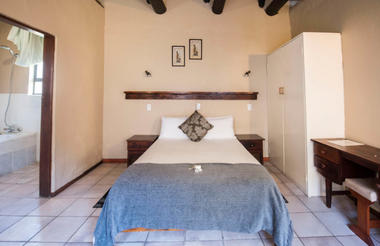
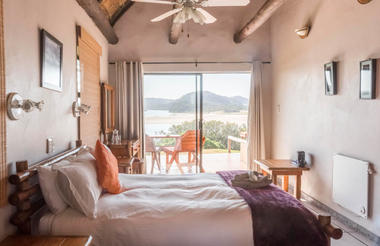

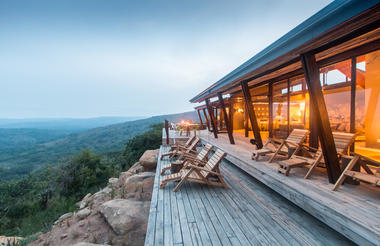
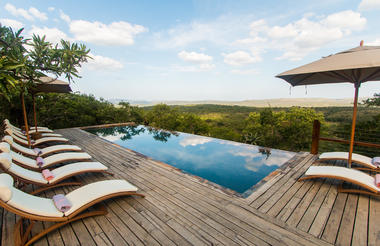
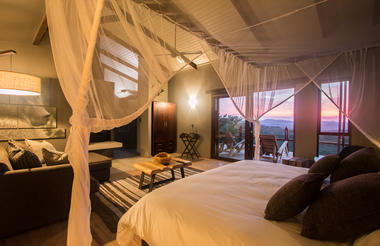
11 Days / 10 Nights
Reference Number: Group tour
18 guests











